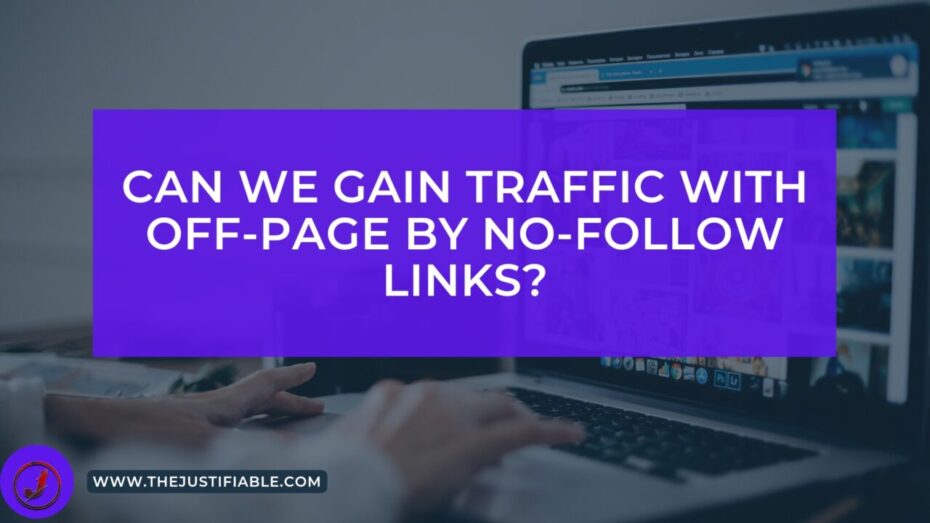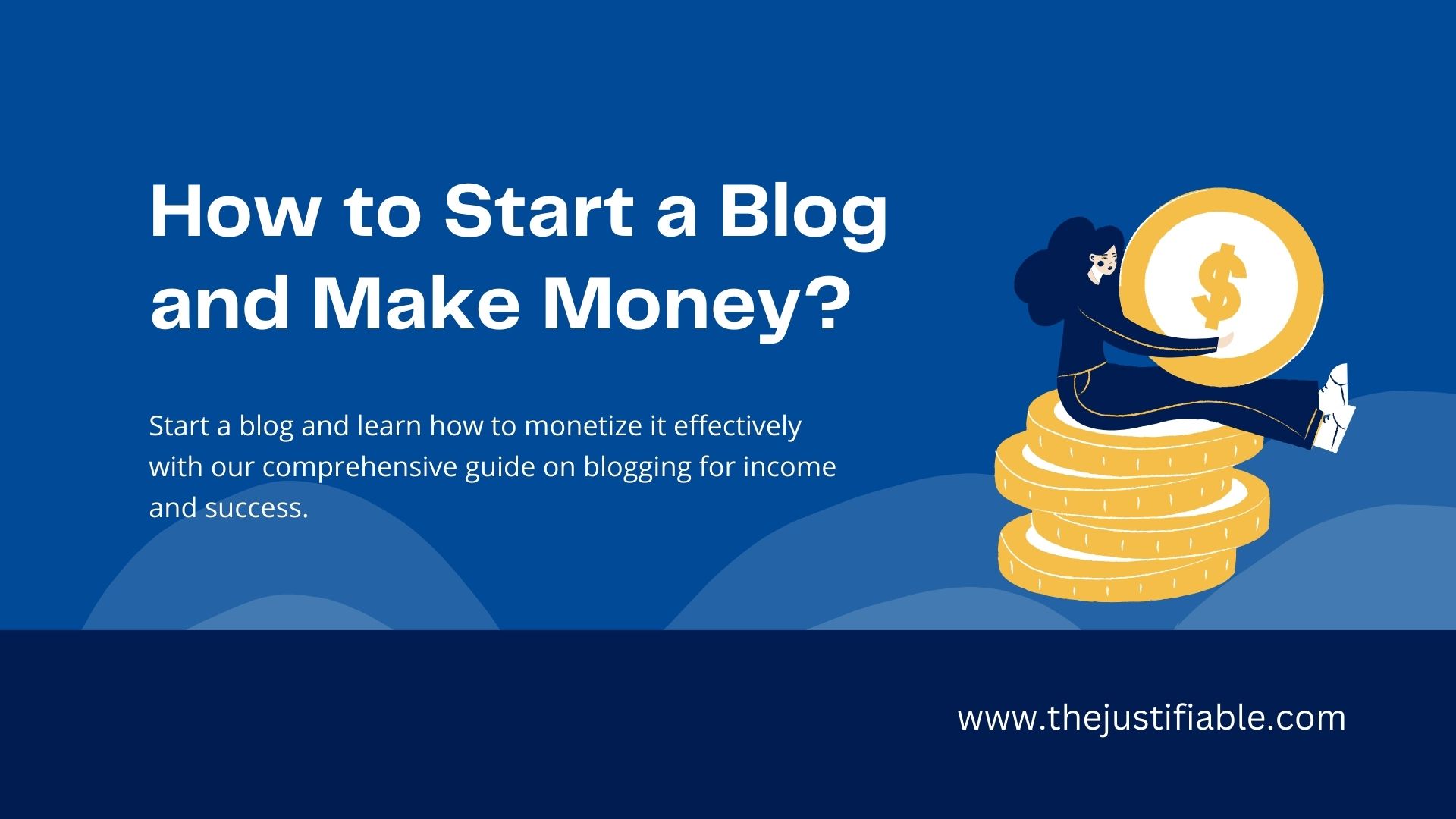Table of Contents
Can no-follow links boost your website’s traffic? This question is often debated in SEO circles, but the answer may surprise you. While traditionally, no-follow links were believed to hold little value in off-page SEO, recent trends suggest they might play a more significant role in driving traffic.
In this article, we’ll explore the impact of no-follow links and how they can contribute to traffic growth.
What Are No-Follow Links and How Do They Work?
No-follow links are HTML tags that instruct search engines not to pass link authority from one site to another. Unlike do-follow links, which boost a site’s SEO ranking by sharing link juice, no-follow links provide a different benefit. They help with building visibility and brand awareness, leading to potential traffic.
Although they don’t directly influence a website’s search engine ranking, they still play a vital role in an SEO strategy. Search engines crawl these links, providing context to a site’s overall authority. This means no-follow links can indirectly improve your site’s reputation and potentially drive valuable traffic.
SEO Services Recommendations
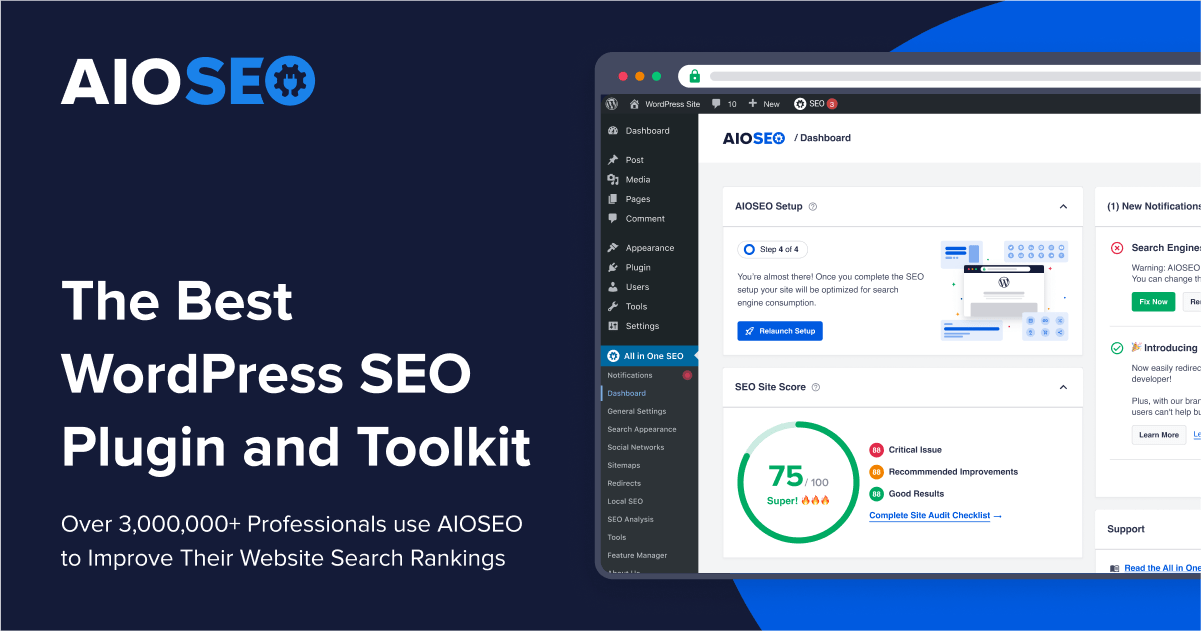 AIOSEO
| 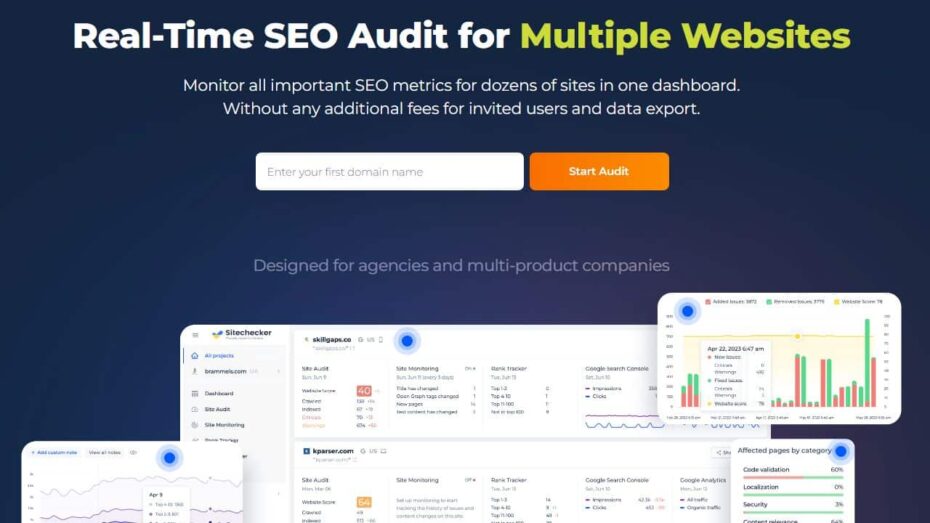 Sitechecker
| 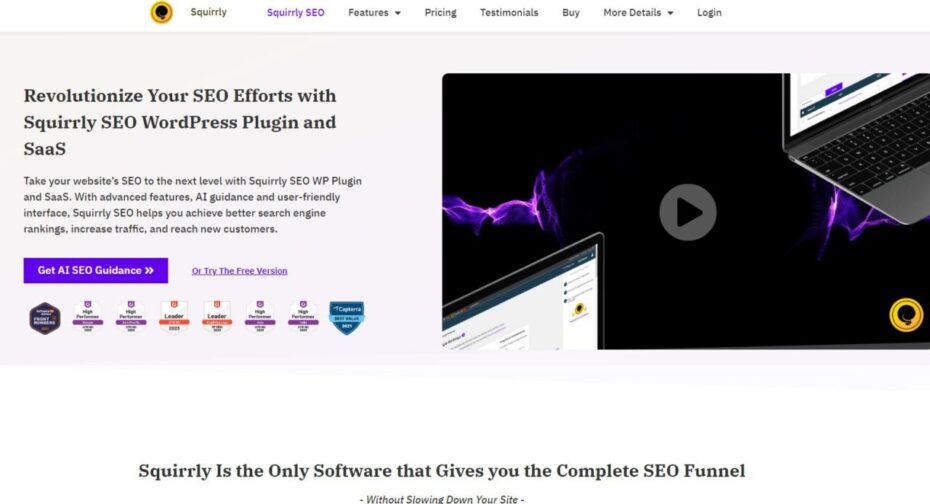 Squirrly
|
Understanding the Basics of No-Follow Links in SEO
No-follow links originated as a way to combat spammy backlinks and untrustworthy sources. When you create a no-follow link, you’re telling search engines that you don’t endorse the content of the linked page. This helps Google and other search engines assess the credibility of websites.
Even though no-follow links don’t pass SEO authority (link juice), they still have value. They provide referral traffic by exposing your website to new audiences. This indirect benefit is especially useful when these links come from reputable or high-traffic websites, making them a smart addition to your link-building strategy.
No-follow links aren’t the sole focus of most SEO efforts, but they should not be ignored. I advise including them in your off-page SEO efforts, as they contribute to a natural link profile. Google looks for diversity in your links, and no-follow links can prevent your site from appearing suspicious or over-optimized.
Furthermore, no-follow links help maintain the balance between organic and paid traffic. When users click on these links, they’re directed to your site, which can drive targeted, qualified traffic. This can contribute to building a broader audience and improving brand awareness.
In summary, no-follow links can be beneficial for growing visibility, increasing traffic, and supporting long-term SEO goals. While their direct impact on rankings is minimal, their ability to boost brand recognition and organic traffic shouldn’t be underestimated.
The Difference Between Do-Follow and No-Follow Links
The key distinction between do-follow and no-follow links lies in how they pass SEO value. Do-follow links transfer link equity, which helps improve search engine rankings, while no-follow links do not. This differentiation affects how search engines treat the links, ultimately influencing a website’s SEO performance.
Do-follow links serve as a vote of confidence, signaling to search engines that a site is trustworthy and valuable. When multiple high-authority websites link to your page, your website gains more link equity, increasing its chances of ranking higher in search results.
No-follow links, on the other hand, don’t transfer this same trust. Search engines still see these links, but they don’t count them toward improving a site’s authority. However, no-follow links are useful for spreading awareness and generating referral traffic, especially from high-traffic sites.
I suggest using a combination of both types of links in your SEO strategy. While do-follow links contribute directly to SEO performance, no-follow links help diversify your link profile. The goal is to maintain a balance that supports both rankings and traffic-building efforts.
No-follow links are also valuable for reducing spam. Websites that heavily rely on user-generated content often implement no-follow tags to prevent potential manipulation. This is particularly helpful in comments, forums, or any place where users might attempt to add irrelevant links for their own gain.
Ultimately, while the technical differences between do-follow and no-follow links may seem subtle, their combined benefits offer a well-rounded approach to building a sustainable and credible online presence.
How Search Engines Interpret No-Follow Links
Search engines treat no-follow links differently from do-follow links, but they still take these links into account. Google, for instance, views no-follow links as signals, though it doesn’t count them toward ranking calculations. However, these links can still be crawled and analyzed to understand a site’s context.
I believe that no-follow links are essential for giving search engines a broader view of your website’s backlink profile. They add legitimacy to your link-building efforts and prevent over-optimization. Search engines reward websites that appear natural, and no-follow links are an integral part of that process.
Despite not passing link authority, no-follow links still contribute to indexing. When Google crawls a no-follow link, it discovers new content and pages, enhancing the reach of your website. This means even if no SEO value is transferred, the link still plays a part in visibility.
Search engines have evolved in how they handle no-follow links. Google announced in 2019 that it would treat no-follow links as hints, rather than directives, for crawling and indexing. This change highlights how no-follow links are still influential in shaping search engine algorithms.
In conclusion, no-follow links offer more than meets the eye when it comes to how search engines interpret them. They may not pass direct ranking signals, but they play a significant role in web discovery, ensuring your site remains visible and accessible to both users and search engines alike.
Why No-Follow Links Still Matter for Traffic Growth
No-follow links may not directly impact your search engine ranking, but they can still drive valuable traffic to your website. By placing your site on high-traffic platforms through no-follow links, you gain exposure to new audiences, increasing the chances of organic traffic growth.
These links also help you build authority within your niche, as they are often placed on reputable websites. Even without link juice, no-follow links serve as a form of validation and brand recognition. This visibility can lead to improved engagement and conversions, contributing to overall growth.
The Indirect Benefits of No-Follow Links for SEO
No-follow links offer several indirect benefits for SEO, starting with increased referral traffic. While they don’t pass SEO equity, users who click on these links are brought directly to your website, which can lead to new followers, customers, or conversions.
Additionally, no-follow links often come from high-authority sites. Being mentioned on such platforms, even without SEO value, adds credibility to your brand. This recognition can lead to more organic mentions, potentially resulting in natural do-follow links that improve rankings.
No-follow links also contribute to a diverse link profile, something search engines value when evaluating a website’s authenticity. I recommend focusing on acquiring no-follow links from relevant, authoritative sources to keep your link-building strategy well-rounded and natural.
These links also aid in content distribution. When your content appears across multiple platforms, even as no-follow links, it reaches a broader audience. As more people engage with your content, your site can attract direct traffic, boosting your overall visibility and influence.
Finally, while no-follow links won’t immediately boost your ranking, they often open doors for further opportunities. Bloggers, industry experts, or influencers who link to your site may later add do-follow links, enhancing your site’s SEO value over time.
Building Authority Through No-Follow Links
No-follow links are crucial for establishing authority in your industry, even though they don’t pass SEO equity. I advise aiming for no-follow links on reputable sites to boost your credibility. These links validate your expertise and expose your content to wider, more relevant audiences.
Appearing on well-known platforms, such as news outlets or niche blogs, increases your trustworthiness. Users often perceive websites linked by reputable sources as more credible. While this might not translate to an immediate SEO boost, the long-term benefits of authority-building are significant.
Moreover, consistent mentions through no-follow links build familiarity with your brand. I believe the more frequently people encounter your site across trusted platforms, the more likely they are to visit and engage with your content. This trust can lead to higher conversions and sustained traffic growth.
Building authority also leads to networking opportunities. I suggest leveraging no-follow links to establish relationships with industry leaders or influencers. These relationships can eventually turn into mutually beneficial partnerships, possibly leading to do-follow links that further strengthen your SEO efforts.
Lastly, over time, no-follow links often become do-follow as relationships grow and trust deepens. This natural progression can boost your website’s authority and SEO, leading to sustainable growth and long-term success.
No-Follow Links and Referral Traffic Potential
No-follow links excel at generating referral traffic, a key benefit often overlooked. When placed on high-traffic sites, these links expose your website to users who may not have discovered it through search engines alone. This can lead to a steady stream of visitors who engage with your content.
Referral traffic is particularly valuable because it often comes from relevant audiences. No-follow links on industry-specific blogs, forums, or social media platforms can attract users genuinely interested in your niche. This targeted traffic can improve your site’s bounce rate and increase conversions.
I recommend strategically placing no-follow links in places where your target audience spends time. Engaging with these platforms not only drives traffic but also builds your presence in the community, fostering trust with potential customers or followers.
Another advantage of referral traffic from no-follow links is its longevity. While search rankings fluctuate, referral traffic from well-placed no-follow links can continue bringing visitors to your site for months or even years after the link was created.
In summary, no-follow links offer immense potential for generating consistent and relevant referral traffic. This form of traffic is often more engaged, contributing to better on-site behavior and increased chances for conversion.
How to Strategically Use No-Follow Links in Off-Page SEO
No-follow links are more than just backlinks with limited SEO value—they can be a strategic tool in off-page SEO when used correctly. By targeting reputable, high-traffic sources, these links can drive significant referral traffic to your site. They also offer brand exposure and help build a natural backlink profile, contributing to long-term SEO success.
Incorporating no-follow links into your SEO strategy requires thoughtful planning. I suggest focusing on placing no-follow links on sites where your target audience spends time, such as industry forums, relevant blogs, or social media platforms. This not only boosts traffic but strengthens your online presence.
Identifying High-Quality Sources for No-Follow Links
Finding high-quality sources for no-follow links is essential for maximizing their benefits. I recommend targeting websites with a strong reputation, high domain authority, and significant traffic. These platforms often include news outlets, prominent blogs, and social media channels, where no-follow links can reach a broader, more engaged audience.
Look for sources that align with your niche or industry. No-follow links from relevant sites are more likely to attract your target audience. For example, a guest post on a popular industry blog may drive highly qualified traffic to your site, leading to increased engagement and conversions.
Another option is to leverage forums and communities. Platforms like Reddit or Quora allow you to share valuable content with a no-follow link, reaching an active audience. These links, though lacking SEO equity, can position your brand as a knowledgeable contributor in your niche.
I also advise exploring opportunities for no-follow links from authoritative sources like Wikipedia. While these links won’t boost rankings directly, they can lend credibility to your site, increasing trust and visibility. The key is to focus on sources that offer both visibility and relevance.
Finally, keep an eye on the social media platforms where your audience is most active. Sharing content with no-follow links on platforms like Twitter, LinkedIn, or Instagram exposes your brand to a large audience, driving referral traffic while building your digital presence.
How No-Follow Links Influence Brand Visibility
No-follow links play a pivotal role in enhancing brand visibility. When placed strategically, they expose your content to a broader audience, creating opportunities for increased recognition and engagement. I recommend focusing on authoritative sites, as these can introduce your brand to new, relevant audiences who may not have found you otherwise.
Being mentioned on high-traffic websites, even with no-follow links, signals to users that your brand is trustworthy and credible. This credibility leads to stronger brand recognition, as users are more likely to remember and engage with brands they see frequently across multiple platforms.
Furthermore, no-follow links help you stay top-of-mind for potential customers. As people encounter your site repeatedly through no-follow links, they are more likely to visit when the need arises. This increased brand awareness directly correlates with higher engagement and potential conversion rates.
I believe another advantage of using no-follow links for visibility is the chance to build long-term relationships. These links can attract the attention of influencers, industry leaders, or potential partners, which can result in future collaborations or do-follow links that enhance your SEO.
Finally, no-follow links allow for more flexibility in your content promotion strategy. By appearing on different platforms, your brand gains exposure in various contexts, making it more visible to a diverse set of users.
Ways to Generate Organic Traffic Through No-Follow Links
No-follow links can be a powerful tool for generating organic traffic if used strategically. I advise placing these links on platforms where your target audience frequently interacts. For instance, contributing meaningful content in forums or on social media platforms with no-follow links can lead to increased engagement and traffic back to your website.
Another way to generate organic traffic is through guest blogging. By writing for reputable websites in your niche, you can add no-follow links that drive readers to your site. These readers are often interested in your content, making them more likely to explore your website further.
Utilize influencer marketing to gain more exposure. Influencers in your niche may share your content, even with no-follow links, directing their audience to your website. This kind of endorsement adds credibility and brings in high-quality traffic from interested users.
Make sure to share your content on social media platforms. Even though these links are typically no-follow, the large audience and engagement levels on platforms like Twitter, LinkedIn, or Pinterest can drive significant traffic to your website. This exposure can lead to a continuous flow of organic visitors.
Lastly, you can generate organic traffic by engaging with online communities. Participate in discussions, offer valuable insights, and include no-follow links where appropriate. This not only helps you reach new users but also establishes you as a trusted expert in your field.
The Best Practices for Acquiring No-Follow Links
Acquiring no-follow links requires a strategic approach. The focus should be on gaining links from authoritative sources that provide real value, rather than just attempting to accumulate as many links as possible. I recommend prioritizing relevance and quality over quantity to ensure that these links positively impact your traffic and visibility.
It’s also crucial to maintain a natural and balanced backlink profile. A mix of both do-follow and no-follow links signals to search engines that your link-building strategy is authentic. By focusing on organic link-building efforts, you can create long-lasting results and a more credible online presence.
Building Relationships for No-Follow Link Opportunities
Building relationships with bloggers, influencers, and industry leaders is key to acquiring high-quality no-follow links. I recommend networking with people in your niche by commenting on their posts, engaging with their content, and offering valuable insights. Over time, these relationships can lead to opportunities for them to include no-follow links to your content.
Participate in industry-related events, webinars, and discussions to connect with thought leaders. I advise sharing your expertise and contributing value to the conversation. By doing this, you position yourself as a valuable partner for content sharing, and you may earn no-follow links from their platforms.
Additionally, engage with influencers on social media. Interacting with influencers by sharing or commenting on their posts can open up opportunities for collaboration. Influencers often mention brands or websites in their content, even using no-follow links, which can lead to more traffic and recognition.
Another tactic is to write guest posts for popular blogs in your industry. Many blogs provide no-follow links in author bios or within the content. Even though these links may not carry SEO weight, they offer exposure to a new audience and can boost your credibility within the niche.
Lastly, I suggest maintaining active communication with those who link to your site. By nurturing these relationships, you create ongoing opportunities for them to link back to your content, either through no-follow or even do-follow links, as your rapport grows.
No-Follow Links from Social Media Platforms
Social media platforms are a great source of no-follow links, helping drive traffic and improve brand visibility. While these platforms generally use no-follow tags, the massive audiences they offer can lead to increased referral traffic. I recommend consistently sharing your content on platforms like Twitter, LinkedIn, and Instagram to reach a wider audience.
On social media, engagement is crucial. Reply to comments, participate in discussions, and use no-follow links to direct followers to valuable content on your website. Even though these links don’t directly boost SEO, they can generate a steady stream of organic traffic through user interaction.
Incorporating no-follow links into your social media strategy also helps with content distribution. I suggest sharing not only your original content but also engaging in reposting and linking to related materials. This helps build your online presence, expand your network, and increase your reach across multiple platforms.
Social media influencers can play a big role in spreading no-follow links to a broader audience. By collaborating with influencers in your niche, you can gain exposure through their followers. This endorsement, while using no-follow links, can significantly boost your traffic and credibility.
I also advise utilizing social media advertising with no-follow links. Paid ads on platforms like Facebook or LinkedIn help reach a targeted audience, driving more traffic back to your website, even if the links themselves do not pass SEO equity.
Guest Posts and Forums as Valuable No-Follow Link Sources
Guest posting and forums are excellent opportunities for gaining valuable no-follow links. By contributing guest posts to reputable blogs in your niche, you not only gain visibility but also establish yourself as an authority in your field. Many blogs provide no-follow links in the author bio or within the content itself, directing traffic back to your site.
Forums, on the other hand, allow for real-time engagement with your audience. Platforms such as Reddit, Quora, and niche-specific forums are ideal places to share your expertise and include no-follow links where relevant. While these links may not pass SEO value, they help direct highly engaged users to your website.
I advise maintaining an active presence in industry-specific forums where your target audience participates. By answering questions and providing insightful content, you can earn no-follow links that bring in targeted traffic. This type of engagement also builds trust and authority in the eyes of both users and search engines.
Guest posting should be approached strategically. Focus on blogs that align with your niche and have a strong readership. This ensures the no-follow links you include reach an audience that is genuinely interested in your content, increasing the chances of click-throughs and conversions.
Lastly, make sure to engage with forum communities consistently. Building trust over time allows you to naturally incorporate no-follow links into your responses without appearing overly promotional. This can lead to long-term traffic growth and a steady stream of new visitors to your website.
Measuring the Impact of No-Follow Links on Traffic
While no-follow links may not directly contribute to SEO rankings, their ability to drive referral traffic is undeniable. Measuring the impact of these links on your traffic is crucial for assessing their value. I recommend using analytics tools like Google Analytics to track referral traffic from no-follow links and evaluate their performance over time.
Focus on understanding how visitors interact with your site once they arrive via no-follow links. Monitoring key metrics such as bounce rate, time on site, and conversion rates can provide valuable insights into the effectiveness of your no-follow link strategy. This data will help you optimize your approach moving forward.
Tracking Referral Traffic from No-Follow Links
Referral traffic is one of the most important metrics to track when evaluating the impact of no-follow links. I suggest using Google Analytics to monitor the performance of each no-follow link you create. This allows you to see exactly where your traffic is coming from and which sources are the most effective.
With referral tracking, you can assess the quality of the traffic that no-follow links bring. Look for patterns in user behavior, such as how long they stay on your site and what actions they take. These insights help refine your link-building strategy, ensuring that you focus on platforms that deliver the best results.
Adding UTM parameters to your no-follow links is a smart way to get more detailed data. By customizing your UTM codes, you can track the performance of each individual link and see how visitors from different sources interact with your content. This makes it easier to determine which no-follow links are driving the most valuable traffic.
Referral traffic data can also highlight opportunities for further engagement. If certain platforms are consistently driving traffic, consider increasing your presence there. By doubling down on these sources, you can continue to generate more visitors through well-placed no-follow links.
In summary, tracking referral traffic from no-follow links provides essential data that helps you measure the impact of your off-page SEO efforts. It’s a reliable way to see which platforms are working for you and where you should focus your future link-building efforts.
Evaluating Website Performance and Traffic Growth
Evaluating the performance of your website in relation to no-follow links involves more than just tracking traffic. I recommend looking at engagement metrics such as bounce rate, pages per session, and conversion rates. These factors will help you understand how well your site is performing once users arrive via no-follow links.
Tracking how no-follow links contribute to overall traffic growth can show you their long-term value. Even though these links don’t pass SEO equity, their ability to drive qualified traffic can lead to increased engagement and potential backlinks from reputable sites. This, in turn, enhances your site’s authority and boosts organic growth.
I also suggest monitoring how no-follow links impact other metrics, such as domain authority or page authority. Although no-follow links don’t directly affect these metrics, the referral traffic they generate can result in more natural do-follow links, which can improve your overall SEO performance over time.
Regularly reviewing your website’s analytics data will allow you to see the bigger picture. Look for trends and correlations between traffic sources, user behavior, and conversions. This holistic approach will give you a deeper understanding of how no-follow links are contributing to your site’s overall success.
To optimize website performance, continue refining your no-follow link strategy. Focus on placing links in areas that bring high-quality traffic and drive meaningful engagement. The more you fine-tune your approach, the more effective your no-follow links will be in supporting your traffic growth goals.
Using Analytics Tools to Assess Link Value
Google Analytics and other tools can offer invaluable insights into the performance of no-follow links. I recommend setting up custom reports and dashboards to track the performance of your no-follow link campaigns. These tools provide data on referral traffic, user behavior, and even conversion rates from visitors who arrive via no-follow links.
Use these analytics to measure the overall value of each no-follow link. Focus on how much traffic a particular link drives and how engaged those visitors are once they arrive on your site. This data will help you refine your no-follow link-building efforts to maximize their impact on your traffic growth.
Beyond just tracking traffic, analytics tools also allow you to measure the long-term benefits of no-follow links. For example, you may find that users who arrive via no-follow links tend to spend more time on your site or view more pages. These insights can guide your future link-building strategy, ensuring that you target sources that bring high-quality visitors.
I advise setting up conversion goals in your analytics tools to track the effectiveness of no-follow links in driving conversions. While these links may not directly influence SEO rankings, they can still contribute to your overall marketing goals by attracting users who are more likely to convert.
By leveraging the power of analytics tools, you can assess the real value of no-follow links and make informed decisions on where to focus your off-page SEO efforts moving forward. Tracking and analyzing these links’ performance ensures that your link-building strategy is always data-driven and effective.


